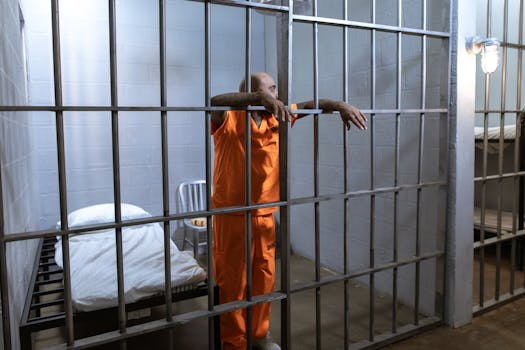The Changing Face of Criminal Sentencing
There has been a significant shift in criminal sentencing practices over the years, with a growing emphasis on restorative justice and rehabilitation rather than the traditional punitive approach. From the rise of alternative sentencing options to the growing awareness of systemic racial disparities in the criminal justice system, the face of criminal sentencing is changing rapidly. In this article, we will explore the evolution of criminal sentencing and its impact on society and individuals.
The Traditional Approach to Criminal Sentencing
In the past, criminal sentencing was predominantly punitive in nature, with the main goal being to punish offenders for their crimes. The severity of the punishment was often determined by the severity of the crime, with little consideration given to the individual circumstances of the offender. This approach was based on the belief that harsher punishments would deter individuals from committing crimes and protect society from further harm.
Under this traditional model, the most common form of punishment was imprisonment, with sentences ranging from a few months to a lifetime depending on the severity of the crime. However, this approach has been heavily criticized for its lack of effectiveness in reducing crime rates and its negative impact on individuals, families, and communities.
The Rise of Alternative Sentencing Options
In recent years, there has been a growing recognition of the flaws in the traditional model of criminal sentencing. This has led to the development of alternative sentencing options that focus on rehabilitation and addressing the root causes of criminal behavior. These options include diversion programs, community service, restitution, and probation, among others.
Diversion programs, such as drug courts and mental health courts, offer non-violent offenders the opportunity to address their underlying issues through treatment and support, rather than being incarcerated. Community service and restitution require offenders to give back to their community or compensate their victims, making amends for their actions. Probation allows offenders to remain in the community under strict supervision and comply with certain conditions, such as attending counseling or maintaining employment.
These alternative sentencing options have been proven to be more effective in reducing recidivism rates and promoting rehabilitation. They also come at a lower cost to taxpayers compared to incarceration, allowing funds to be allocated towards programs that address the root causes of crime.
The Shift towards Restorative Justice
Another significant change in criminal sentencing is the growing emphasis on restorative justice. Restorative justice focuses on repairing the harm caused by the crime rather than punishing the offender. It involves bringing together the victim, the offender, and the community to address the harm caused and find a resolution that benefits all parties.
This approach recognizes that crime is not just a violation of the law, but also a harm to individuals and communities. It prioritizes the needs and voices of the victim and promotes accountability and responsibility on the part of the offender. Restorative justice has been found to promote healing for victims and reduce reoffending rates, as well as empower communities to address crime in a more meaningful and holistic way.
The Fight Against Systemic Racial Disparities
The changing face of criminal sentencing also includes a growing awareness of the systemic racial disparities in the criminal justice system. People of color are disproportionately represented in the criminal justice system, with higher rates of arrest, conviction, and harsher sentences compared to their white counterparts. This is due to a variety of factors, including implicit bias, racial profiling, and unequal access to legal representation.
In recent years, there has been a push for criminal justice reform to address these disparities. This has led to initiatives such as bail reform and the reevaluation of mandatory minimum sentencing laws, which have been found to disproportionately impact communities of color. There is still a long way to go in addressing these systemic issues, but the recognition and discussion of them is a step in the right direction.
The Impact of Changing Sentencing Practices
The shift towards alternative sentencing and restorative justice has had a significant impact on society and individuals. It has opened up opportunities for rehabilitation and second chances for offenders, leading to reduced recidivism rates and a more positive impact on communities. It has also brought attention to the flaws in the traditional approach to criminal sentencing and sparked conversations about the need for reform.
However, there are also challenges that come with these changes. Some argue that alternative sentencing options may be too lenient and not provide enough accountability for offenders. There are also concerns about the potential for racial disparities to persist, even with the implementation of reform measures.
In Conclusion
The face of criminal sentencing is continually evolving, with a growing focus on rehabilitation, restorative justice, and addressing systemic issues. While there are challenges that come with these changes, there is also great potential for positive impact on society and individuals. As we continue to strive for a fair and just criminal justice system, it is essential to consider the role of sentencing practices and their impact on the lives of those involved.










